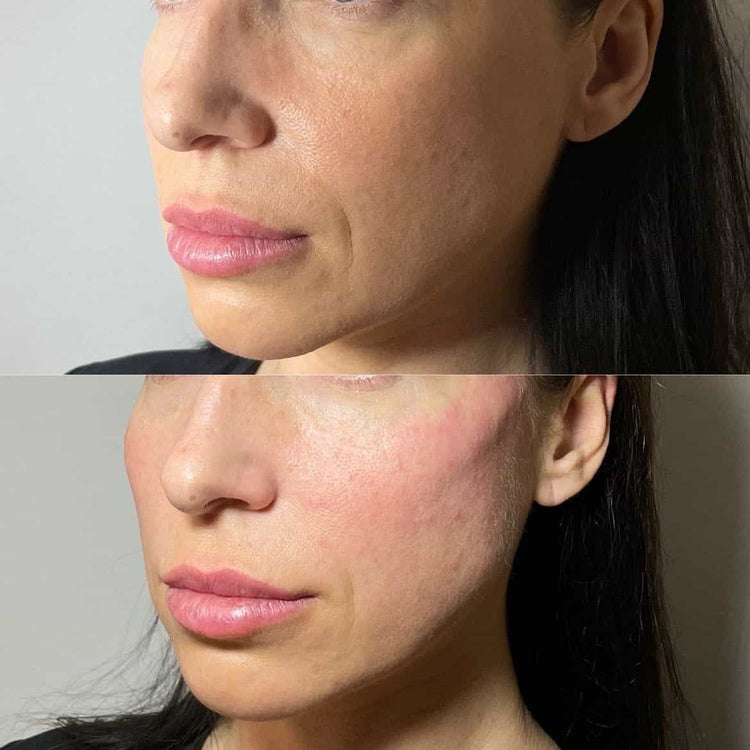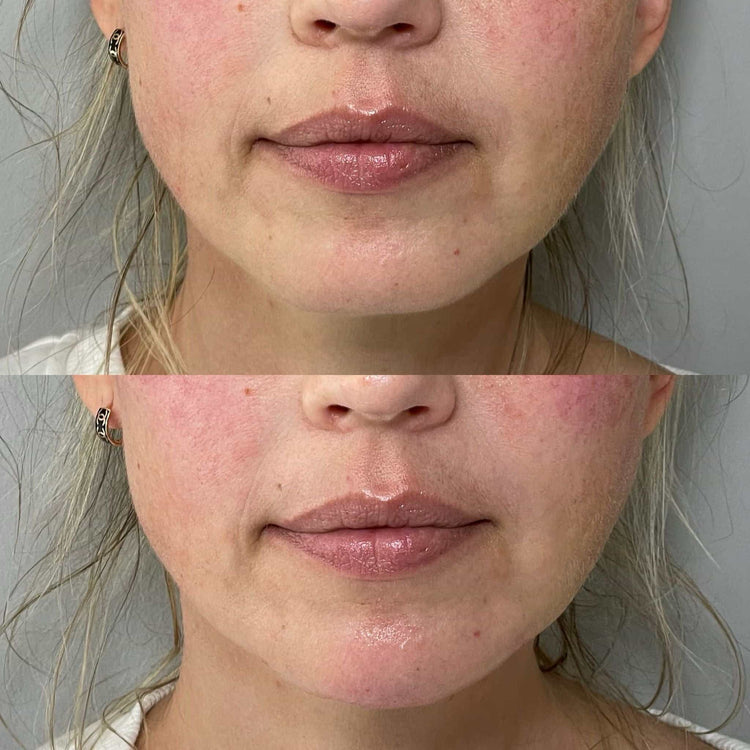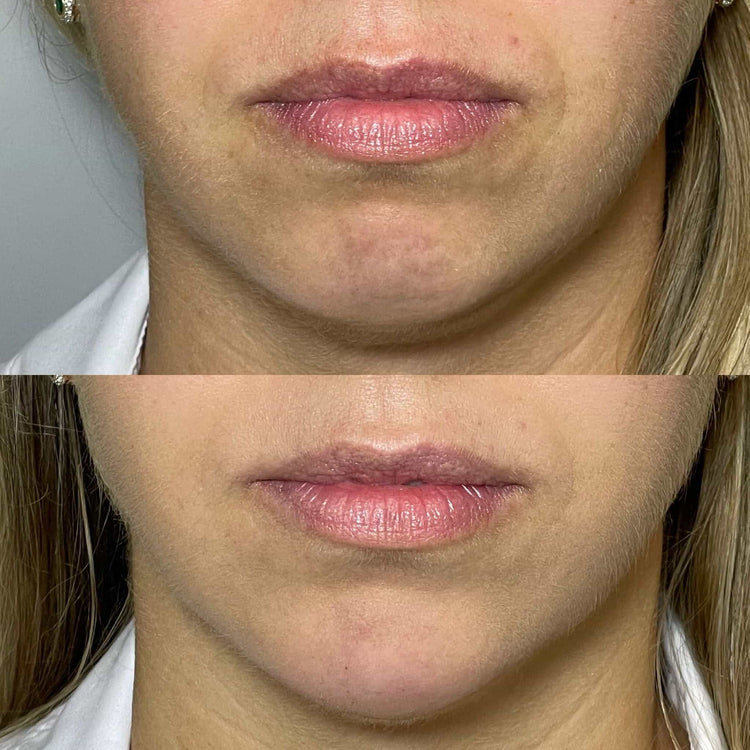Dermal Fillers
Dermal fillers are a popular cosmetic treatment used to restore volume and fullness to areas of the face that have lost definition over time.
Types of Fillers
Dermal fillers are a popular cosmetic treatment used to restore volume and fullness to areas of the face that have lost definition over time.
There are various types of dermal fillers available, each formulated with different ingredients to achieve specific results.

- Hyaluronic Acid Fillers: These are the most common type and are made from a naturally occurring substance in the body. They effectively add volume, hydrate skin, and smooth out wrinkles.
- Collagen Fillers: Collagen is another natural protein found in the skin that provides structure and support. Collagen fillers can be used to plump lips, reduce lines around the mouth, and improve facial contours.
- Calcium Hydroxylapatite Fillers: These fillers are made from a mineral that stimulates collagen production. They are often used for deeper wrinkles and contouring.
- Poly-L-lactic Acid (PLLA) Fillers: PLLA is a synthetic material that gradually dissolves over time, encouraging the body to produce new collagen. It’s suitable for long-lasting volume enhancement and facial rejuvenation.
What Can Fillers Treat?
Dermal fillers can effectively treat a wide range of concerns associated with facial aging and volume loss.
They can be used to smooth out wrinkles and fine lines, plump up lips, restore lost cheek volume, define jawlines, and even enhance the shape of the chin.
Benefits of Using Fillers
Dermal fillers offer numerous benefits for individuals seeking to address facial volume loss. By injecting hyaluronic acid or other dermal filler substances beneath the skin, practitioners can effectively restore fullness and definition to areas that have lost their youthful appearance over time.
One of the primary advantages of using dermal fillers is their ability to smooth out wrinkles and fine lines. The fillers act as a scaffold, plumping up the skin and minimizing the appearance of creases and folds.
Fillers can also be used to enhance lip volume, creating a fuller, more youthful pout. This can add definition and improve facial symmetry.

Furthermore, dermal fillers can restore lost cheek volume, contributing to a more sculpted and lifted appearance. By adding volume to the cheeks, fillers can help counteract the effects of gravity and create a more youthful contour.
Dermal fillers are a versatile treatment option that can address a range of concerns associated with facial aging and volume loss.
Consultation and Procedure

Consultation and procedure for dermal filler treatments aim to restore volume and fullness to areas of the face affected by age-related volume loss.
Finding a Qualified Practitioner
Finding a qualified practitioner is crucial for achieving safe and effective results from dermal filler treatments. Look for practitioners who are board-certified in plastic surgery or dermatology and have experience injecting dermal fillers.
Ask about their training, qualifications, and the specific types of dermal fillers they use. It’s also important to check reviews and testimonials from previous patients to get an idea of the practitioner’s expertise and patient satisfaction.
Initial Consultation
Dermal fillers are a popular cosmetic treatment used to restore volume and fullness to areas of the face that have lost definition over time. There are various types of dermal fillers available, each formulated with different ingredients to achieve specific results.
- Hyaluronic Acid Fillers: These are the most common type and are made from a naturally occurring substance in the body. They effectively add volume, hydrate skin, and smooth out wrinkles.
- Collagen Fillers: Collagen is another natural protein found in the skin that provides structure and support. Collagen fillers can be used to plump lips, reduce lines around the mouth, and improve facial contours.
- Calcium Hydroxylapatite Fillers: These fillers are made from a mineral that stimulates collagen production. They are often used for deeper wrinkles and contouring.
- Poly-L-lactic Acid (PLLA) Fillers: PLLA is a synthetic material that gradually dissolves over time, encouraging the body to produce new collagen. It’s suitable for long-lasting volume enhancement and facial rejuvenation.
Consultation and Procedure
- Initial Consultation: During the initial consultation, you will discuss your aesthetic goals with a qualified practitioner. They will assess your skin type, facial structure, and medical history to determine if dermal fillers are a suitable treatment option for you.
- Treatment Plan: Based on your individual needs, the practitioner will create a personalized treatment plan outlining the type of filler, injection areas, and expected results.
- Procedure Day: On the day of your procedure, a topical anesthetic will be applied to the treatment area to minimize discomfort. The practitioner will then carefully inject the dermal filler into designated points using a fine needle.
- Recovery: After the procedure, you may experience some mild swelling, redness, or bruising that typically subsides within a few days. It’s important to follow the aftercare instructions provided by your practitioner to ensure optimal healing and results.
Treatment Process
Dermal fillers are injectable substances used to restore volume and fullness to the face. They can be used to smooth wrinkles, plump lips, enhance cheekbones, define jawlines, and more.
The consultation process typically involves a discussion of your aesthetic goals and medical history, followed by an assessment of your skin and facial structure. During this consultation, the practitioner will determine if you are a suitable candidate for dermal fillers and discuss the type of filler, injection areas, and expected results.
On the day of the procedure, a topical anesthetic is applied to the treatment area to minimize discomfort. The practitioner will then carefully inject the dermal filler into designated points using a fine needle.
Recovery time varies depending on the individual and the type of filler used. Most patients can return to their normal activities immediately after the procedure, although some mild swelling or bruising may occur.
Recovery and Results
Dermal fillers offer a safe and effective solution for restoring volume and fullness to areas of the face that have lost definition with age. These injectable substances work by plumping up the skin, smoothing out wrinkles, and enhancing facial contours.
Expected Downtime
Recovery from dermal filler treatments is generally quick and comfortable. Most patients experience only mild swelling, redness, or bruising at the injection sites, which typically subsides within a few days.
There’s usually no significant downtime required after the procedure. You can typically resume your normal activities immediately, including work, exercise, and social events.
Longevity of Results
The longevity of results from dermal fillers varies depending on several factors, including the type of filler used, individual metabolism, lifestyle choices, and the treated area.
- Hyaluronic Acid Fillers: These typically last 6 to 18 months.
- Collagen Fillers: Results generally last for 4 to 6 months.
- Calcium Hydroxylapatite Fillers: These can provide longer-lasting results, up to 12 to 18 months.
- Poly-L-lactic Acid (PLLA) Fillers: PLLA fillers gradually stimulate collagen production, leading to more enduring results that can last for 18 months to 2 years or even longer.
To prolong the effects of dermal fillers, it’s important to follow your practitioner’s aftercare instructions carefully. Avoid excessive sun exposure, smoking, and alcohol consumption, as these factors can break down the filler and lead to premature fading.
Touch-Up Appointments
Dermal fillers are injectable substances used to restore volume and fullness to the face. They can be used to smooth wrinkles, plump lips, enhance cheekbones, define jawlines, and more.
Recovery from dermal filler treatments is generally quick and comfortable. Most patients experience only mild swelling, redness, or bruising at the injection sites, which typically subsides within a few days.
There’s usually no significant downtime required after the procedure. You can typically resume your normal activities immediately, including work, exercise, and social events.
Touch-up appointments are often recommended to maintain optimal results from dermal filler treatments. The frequency of touch-ups depends on several factors, including the type of filler used, individual metabolism, lifestyle choices, and the treated area.
- Hyaluronic Acid Fillers: Touch-ups may be needed every 6 to 18 months.
- Collagen Fillers: Touch-ups are typically required every 4 to 6 months.
- Calcium Hydroxylapatite Fillers: These may last longer, with touch-ups needed every 12 to 18 months.
- Poly-L-lactic Acid (PLLA) Fillers: PLLA fillers can provide longer-lasting results, so touch-ups may be recommended every 18 to 24 months or even less frequently.
Cost and Insurance
Understanding the costs associated with dermal filler treatments in Wotton, Surrey is essential for informed decision-making. Prices can vary depending on several factors, including the type and amount of filler used, the specific areas being treated, the practitioner’s experience and qualifications, and the clinic’s location and reputation.
Average Cost Range
The average cost range for dermal fillers in Wotton, Surrey typically falls between £250 and £700 per treatment session.
Insurance Coverage
The cost of dermal filler treatments can vary depending on several factors, including the type and amount of filler used, the specific areas being treated, the practitioner’s experience and qualifications, and the clinic’s location and reputation.
In Wotton, Surrey, the average cost range for dermal fillers is typically between £250 and £700 per treatment session.
Book a safe and professional lip filler treatment with Dr. Laura Geige at It’s Me & You Clinic
- Filler For Volume Loss In Wotton, Surrey - September 22, 2025
- Is Mental Crease Filler Safe? - September 21, 2025
- Downturned Smile Treatment Near Sidlow Bridge, Surrey - September 19, 2025